SAN FERNANDO City, La Union (PIA) — A health expert from the Ilocos Training and Regional Medical Center (ITRMC) underscores the importance of early detection of scoliosis for effective condition management and preventing case progression.
Scoliosis is the lateral or sideways curving of the spine known to be an “S” shape.
During a “Kapihan sa Ilocos” episode, Dr. Myrielle Madayag, medical officer III from the ITRMC, explained that scoliosis is a progressive condition, meaning it worsens if left untreated.
“Common age dito ay 10-15 years old. Iyan ‘yong very crucial kasi habang tumatanda sila, lumalala rin yung pagkurba ng likod, then magiging stagnant, papalo (babalik nang mabilis) ‘yong progression ng pagkurba. Pagdating naman ng adulthood, meaning around 50-60 years old, humihina tumatanda din yung buto,” Madayag said.
(The most crucial age range is between 10 and 15 years old. As children grow older, the curvature of the spine worsens. While it eventually plateaus, the progression can accelerate again (become more rapid) in adulthood, around 50-60 years old, when bones weaken due to aging.)
“Pwedeng mild scoliosis sila nong bata tapos severe scoliosis na sila pag tanda pag hindi naagapan nang maaga,” Madayag added.
(Mild scoliosis in childhood can progress to severe scoliosis in adulthood if not treated early.)
This condition is classified into mild scoliosis with curves more than 10 degrees, moderate scoliosis with curves between 25 and 40 degrees, and severe scoliosis with curves greater than 40 degrees.
While scoliosis is not curable, it can be managed through corrective measures. Madayag emphasized the importance of maintaining adequate or increased calcium intake, such as drinking milk regularly to support bone health.
Additionally, she advised individuals with scoliosis to avoid lifting heavy objects, refrain from one-sided sports like golf, and practice good posture especially when using electronic devices.
Eighty percent of its cases are idiopathic or have unknown causes and 20 percent of scoliosis cases are secondary to other conditions such as neuromuscular disorders, congenital spinal malformations, or injuries.
Therefore, she urges the public to be proactive and get checked for scoliosis if they notice any curvature in the spine.
Since there is specific management depending on the severity, the health expert urges the public to be proactive and get checked for scoliosis if they notice any curvature in the spine.
Madayag also emphasized consulting a doctor before undergoing any treatments such as massage therapy to properly correct the condition. (MJTAB/REB/PIA Region 1)












